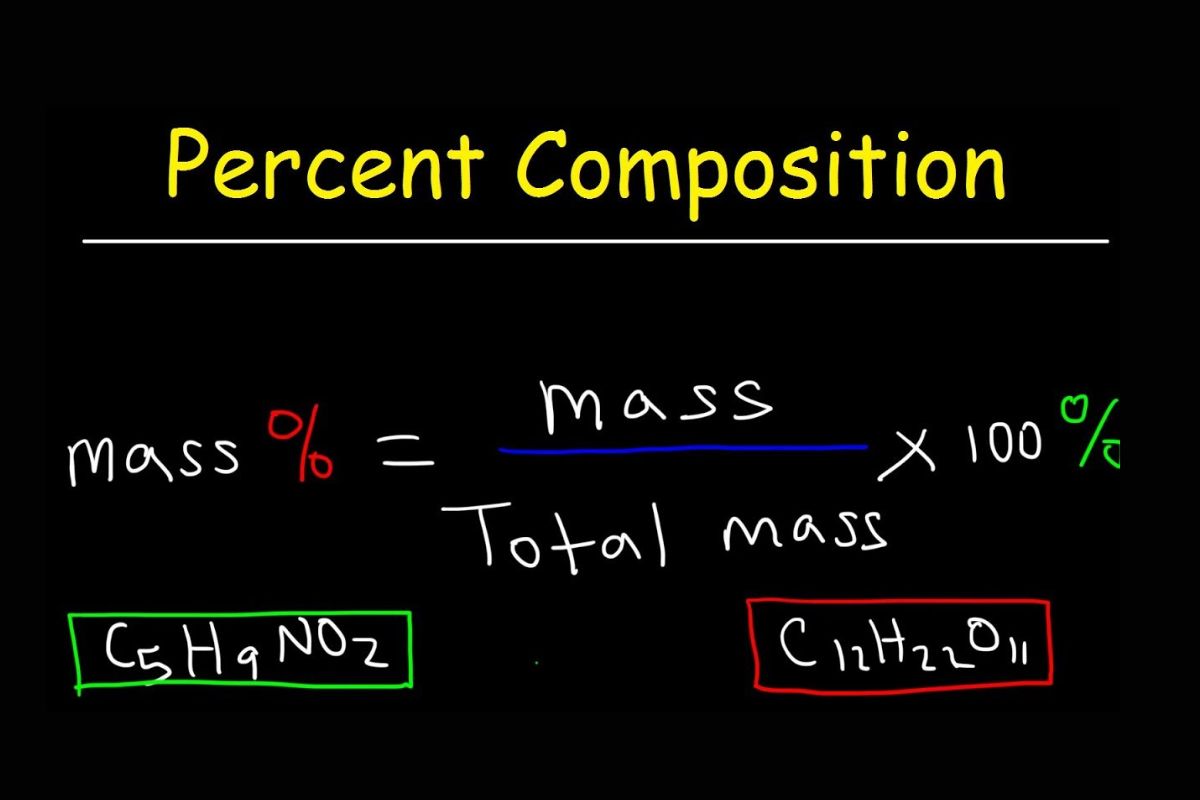
Percent composition is a fundamental concept in chemistry that tells us the percentage by mass of each element in a compound. Why is percent composition important? It helps chemists understand the exact makeup of a substance, which is crucial for everything from creating new materials to analyzing unknown samples. Imagine baking a cake without knowing the exact amount of each ingredient. The result could be a disaster! Similarly, in chemistry, knowing the percent composition ensures that reactions occur correctly and efficiently. Whether you're a student tackling homework or a professional in a lab, mastering this concept can make a world of difference in your work.
What is Percent Composition?
Percent composition is a way to express the relative amounts of each element in a compound. It tells you what percentage of the total mass of the compound comes from each element. This concept is crucial in chemistry for understanding the makeup of substances.
-
Percent composition is calculated using the formula: (mass of element/mass of compound) x 100.
-
It helps chemists determine the empirical formula of a compound.
-
This concept is essential for stoichiometry, which involves calculating reactants and products in chemical reactions.
Importance in Chemistry
Understanding percent composition is vital for various applications in chemistry. It aids in identifying substances, predicting reactions, and even in industrial applications.
-
Percent composition helps in identifying unknown compounds by comparing their composition with known substances.
-
It is used in quality control to ensure the purity of chemical products.
-
In pharmaceuticals, it ensures the correct dosage of elements in medications.
Real-World Applications
Percent composition isn't just a theoretical concept; it has practical uses in everyday life and various industries.
-
In nutrition, it helps determine the percentage of nutrients in food items.
-
Environmental scientists use it to analyze pollutants in air and water.
-
It is crucial in metallurgy for creating alloys with specific properties.
Calculating Percent Composition
Knowing how to calculate percent composition is a fundamental skill in chemistry. Here are some steps and examples to guide you.
-
To find the percent composition of water (H₂O), calculate the mass of hydrogen and oxygen in one mole of water.
-
The molar mass of water is 18 g/mol, with hydrogen contributing 2 g and oxygen 16 g.
-
The percent composition of hydrogen in water is (2/18) x 100 ≈ 11.11%.
-
The percent composition of oxygen in water is (16/18) x 100 ≈ 88.89%.
Historical Background
The concept of percent composition has been around for centuries, evolving with advancements in chemistry.
-
Antoine Lavoisier, the father of modern chemistry, laid the groundwork for understanding chemical composition in the 18th century.
-
The development of the periodic table by Dmitri Mendeleev in the 19th century further refined the understanding of percent composition.
-
Advances in analytical techniques, such as mass spectrometry, have made it easier to determine percent composition accurately.
Fun Facts
Percent composition can be fascinating when you look at some interesting examples and trivia.
-
The percent composition of carbon in diamond is 100%, making it a pure element.
-
Table salt (NaCl) has a percent composition of 39.34% sodium and 60.66% chlorine.
-
In the human body, oxygen makes up about 65% of the total mass.
Challenges and Misconceptions
Despite its importance, there are common challenges and misconceptions about percent composition.
-
One common misconception is confusing percent composition with empirical formula, which only gives the simplest ratio of elements.
-
Calculating percent composition can be tricky if the compound contains isotopes with different masses.
-
Errors in measurement can lead to inaccurate percent composition results, affecting the reliability of the data.
Advanced Applications
For those diving deeper into chemistry, percent composition has advanced applications in research and industry.
-
In forensic science, it helps identify substances at crime scenes.
-
It is used in the development of new materials with specific properties, such as superconductors.
-
In biochemistry, it aids in understanding the composition of complex molecules like proteins and DNA.
Environmental Impact
Percent composition also plays a role in understanding and mitigating environmental issues.
-
It helps in analyzing the composition of greenhouse gases, contributing to climate change studies.
-
Environmental engineers use it to design processes for removing contaminants from water and soil.
The Final Word on Percent Composition
Percent composition is a handy tool in chemistry. It helps you figure out the makeup of a compound by showing the percentage of each element. This info is crucial for chemists when they need to mix substances in precise amounts or understand a compound's properties.
Knowing percent composition can also help in everyday life. For example, it can tell you how much of each ingredient is in your food or how much of a nutrient is in a supplement. It's a simple concept but has many practical uses.
Whether you're a student, a professional, or just curious, understanding percent composition can make a big difference. It simplifies complex ideas and makes them easier to grasp. So next time you come across a chemical formula, you'll know exactly what it's made of.
Was this page helpful?
Our commitment to delivering trustworthy and engaging content is at the heart of what we do. Each fact on our site is contributed by real users like you, bringing a wealth of diverse insights and information. To ensure the highest standards of accuracy and reliability, our dedicated editors meticulously review each submission. This process guarantees that the facts we share are not only fascinating but also credible. Trust in our commitment to quality and authenticity as you explore and learn with us.
